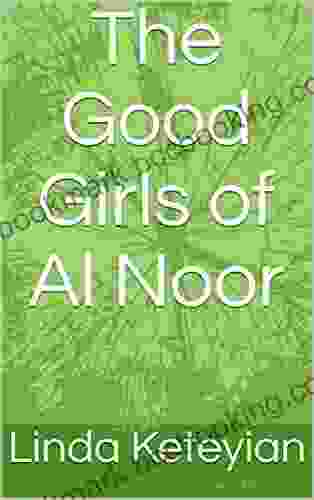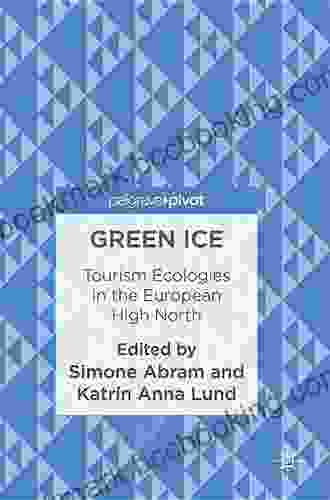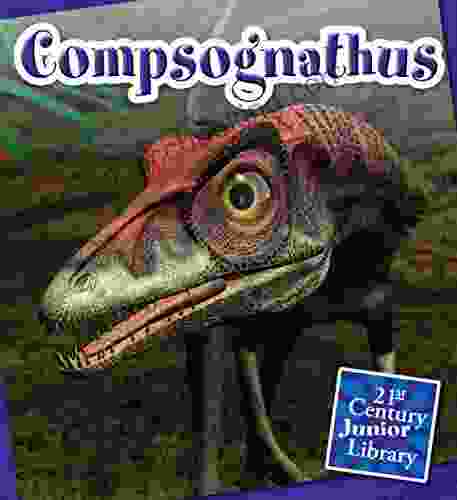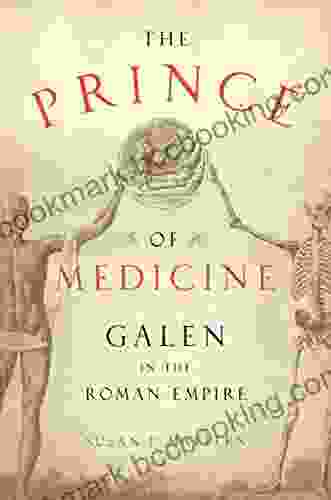Tourism Ecologies In The European High North

The Arctic and sub-Arctic landscapes of the European High North, spanning regions such as Northern Norway, Iceland, Finland, and Greenland, are renowned for their pristine wilderness, captivating natural beauty, and rich cultural heritage. In recent decades, these northern realms have witnessed a surge in tourism, driven by an increasing allure for adventure, exploration, and the desire to experience the unique natural and cultural wonders of the region.
While tourism undoubtedly offers economic benefits to these sparsely populated areas, it also poses potential environmental and social challenges. The influx of visitors can strain infrastructure, impact wildlife, and potentially disrupt the traditional way of life for local communities.
4.8 out of 5
| Language | : | English |
| File size | : | 1432 KB |
| Text-to-Speech | : | Enabled |
| Screen Reader | : | Supported |
| Enhanced typesetting | : | Enabled |
| Word Wise | : | Enabled |
| Print length | : | 130 pages |
| Paperback | : | 31 pages |
| Item Weight | : | 3.52 ounces |
| Dimensions | : | 6 x 0.07 x 9 inches |
To address these concerns, it is imperative to develop a sustainable tourism model that balances the economic benefits of tourism with the preservation of the region's pristine environment and cultural integrity. The book "Tourism Ecologies in the European High North" delves into this complex relationship between tourism and the environment, providing valuable insights and recommendations for sustainable tourism practices.
Tourism's Impacts on The Arctic Environment
The Arctic environment is inherently fragile and vulnerable to human activities. The book highlights the potential negative impacts of tourism on the region's delicate ecosystems, including:
- Wildlife Disturbance: The presence of tourists can disrupt the behavior and habitats of wildlife, affecting feeding patterns, reproduction, and survival.
- Habitat Degradation: Increased foot traffic and the development of tourist infrastructure can damage vegetation, alter soil composition, and contribute to erosion.
- Pollution: Tourism activities can generate litter, sewage, and other forms of pollution that can harm wildlife and contaminate water sources.
- Climate Change: The tourism industry contributes to greenhouse gas emissions, exacerbating the already severe impacts of climate change on Arctic ecosystems.
The book emphasizes the need for tourism operators and policymakers to implement measures to mitigate these negative impacts and ensure the long-term health of the Arctic environment.
Balancing Tourism and Cultural Preservation
The European High North is home to diverse indigenous communities that have a deep connection to their traditional lands and cultures. Tourism can disrupt these communities if it is not conducted respectfully and sustainably.
The book explores the potential impacts of tourism on local cultures, including:
- Cultural Commodification: Tourists may view local cultures as exotic spectacles, leading to the commodification and devaluation of cultural practices.
- Social Displacement: Rapid tourism development can drive up land prices, forcing local residents to relocate and potentially disrupting their way of life.
- Erosion of Traditional Values: The presence of tourists may influence local behaviors and values, leading to a loss of cultural identity.
The book advocates for a tourism model that respects and supports local cultures, ensuring that indigenous communities benefit from tourism without sacrificing their traditional practices and values.
Sustainable Tourism Practices
The book "Tourism Ecologies in the European High North" offers practical recommendations for sustainable tourism practices, including:
- Limiting Visitor Numbers: Managing the number of tourists in sensitive areas can help reduce environmental impacts and protect wildlife.
- Educating Tourists: Providing visitors with information about the local environment and culture can promote responsible behavior and minimize negative impacts.
- Using Sustainable Infrastructure: Developing eco-friendly accommodations, transportation systems, and waste management facilities can reduce tourism's footprint.
- Supporting Local Businesses: Prioritizing the use of local services and products supports local economies and fosters community involvement.
- Engaging with Local Communities: Consulting with indigenous communities and involving them in tourism planning ensures that their needs and perspectives are considered.
By implementing these sustainable practices, tourism operators and policymakers can create a tourism model that benefits both the environment and the communities of the European High North.
The book "Tourism Ecologies in the European High North" provides a comprehensive overview of the intricate relationship between tourism and the environment in this fragile region. It highlights the challenges and opportunities presented by tourism, advocating for a sustainable approach that balances economic benefits with the preservation of the Arctic environment and cultural integrity.
Through responsible tourism practices and collaboration between stakeholders, it is possible to create a tourism model that allows visitors to experience the wonders of the European High North while ensuring the long-term sustainability of this pristine wilderness.
4.8 out of 5
| Language | : | English |
| File size | : | 1432 KB |
| Text-to-Speech | : | Enabled |
| Screen Reader | : | Supported |
| Enhanced typesetting | : | Enabled |
| Word Wise | : | Enabled |
| Print length | : | 130 pages |
| Paperback | : | 31 pages |
| Item Weight | : | 3.52 ounces |
| Dimensions | : | 6 x 0.07 x 9 inches |
Do you want to contribute by writing guest posts on this blog?
Please contact us and send us a resume of previous articles that you have written.
 Book
Book Novel
Novel Page
Page Chapter
Chapter Text
Text Story
Story Genre
Genre Reader
Reader Library
Library Paperback
Paperback E-book
E-book Magazine
Magazine Newspaper
Newspaper Paragraph
Paragraph Sentence
Sentence Bookmark
Bookmark Shelf
Shelf Glossary
Glossary Bibliography
Bibliography Foreword
Foreword Preface
Preface Synopsis
Synopsis Annotation
Annotation Footnote
Footnote Manuscript
Manuscript Scroll
Scroll Codex
Codex Tome
Tome Bestseller
Bestseller Classics
Classics Library card
Library card Narrative
Narrative Biography
Biography Autobiography
Autobiography Memoir
Memoir Reference
Reference Encyclopedia
Encyclopedia Max Lugavere
Max Lugavere Michael Moran
Michael Moran Jenny Mclachlan
Jenny Mclachlan Jim Cobb
Jim Cobb Jennifer M Bay Williams
Jennifer M Bay Williams Nurse Michael Alexander
Nurse Michael Alexander Jeremy Croston
Jeremy Croston Jim Downs
Jim Downs Yoshimi Kuroda
Yoshimi Kuroda Rita Carter
Rita Carter Jesse Braun
Jesse Braun Jennie Smallenbroek
Jennie Smallenbroek Nicholas Carr
Nicholas Carr Lynne Kelly
Lynne Kelly The Secret Libraries
The Secret Libraries Yael Kapitolnik
Yael Kapitolnik Jennifer Grant
Jennifer Grant Susan Tschudi
Susan Tschudi Jennifer Kronenberg
Jennifer Kronenberg Jenney Egertson
Jenney Egertson
Light bulbAdvertise smarter! Our strategic ad space ensures maximum exposure. Reserve your spot today!

 Bruce SnyderUnleash the Darkness with Bane Angel Rebellion MC: A Gripping Urban Fantasy...
Bruce SnyderUnleash the Darkness with Bane Angel Rebellion MC: A Gripping Urban Fantasy...
 Hector BlairPrepare for the LSAT with Confidence: Unlock Your Success with December 2024...
Hector BlairPrepare for the LSAT with Confidence: Unlock Your Success with December 2024... Ira CoxFollow ·15.3k
Ira CoxFollow ·15.3k Branson CarterFollow ·13.8k
Branson CarterFollow ·13.8k Donald WardFollow ·11.8k
Donald WardFollow ·11.8k Aleksandr PushkinFollow ·6.8k
Aleksandr PushkinFollow ·6.8k Francis TurnerFollow ·9.3k
Francis TurnerFollow ·9.3k John UpdikeFollow ·16.6k
John UpdikeFollow ·16.6k Rob FosterFollow ·11k
Rob FosterFollow ·11k Edward ReedFollow ·10.8k
Edward ReedFollow ·10.8k

 Patrick Rothfuss
Patrick RothfussGuide for Parents: Unlocking Your Child's Problem-Solving...
As a parent, you...

 Ignacio Hayes
Ignacio HayesThe Good Girls of Al Noor: A Gripping Tale of Hope and...
On March 15, 2019, a...

 Lee Simmons
Lee Simmons50 Games and Activities for All the Turkeys at Your...
Thanksgiving is a time for family, friends,...

 Sean Turner
Sean TurnerRewiring the World: From Edison to Google - The...
A Captivating...
4.8 out of 5
| Language | : | English |
| File size | : | 1432 KB |
| Text-to-Speech | : | Enabled |
| Screen Reader | : | Supported |
| Enhanced typesetting | : | Enabled |
| Word Wise | : | Enabled |
| Print length | : | 130 pages |
| Paperback | : | 31 pages |
| Item Weight | : | 3.52 ounces |
| Dimensions | : | 6 x 0.07 x 9 inches |












